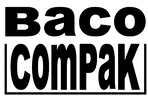What Happens to Your Waste and Why?
- lauren2155
- Mar 28
- 3 min read
If you've ever hired a skip for a home renovation, garden clearance or construction project you might have wondered: what happens to the waste once the skip is collected? Understanding the process highlights the importance of responsible waste management.
Once your skip is full and collected it is brought back to our waste transfer station at Bawsey, King’s Lynn. Our transfer station is designed to sort and process waste efficiently, ensuring minimal environmental impact whilst recycling as much waste as possible. As soon as it arrives it is weighed on one of our weighbridges, this is for compliance and reporting purposes, along with some billing for skips charged per tonne. Once weighed the skip is then tipped in the appropriate bay.
How is General waste sorted?

As the above diagram shows when general waste is brought in it is picked through with the crane to remove any POP’s and larger waste, this is then placed on to a shaker, where any soil falls through the grid. Waste continues on to a conveyor belt and up to our picking station where our staff pick out any metals, wood, cardboard and brick rubble. These are placed into the shoots and fill up the bay below. The waste continues on the conveyor where it is shredded. On leaving the shredder a magnet collects all smaller metal, allowing remaining waste to continue into the trommel, which is a large drum with holes in, this allows the smaller shredded waste to fall down and any larger shredded waste continues down for separate disposal.
By processing the waste in this manner it allows us to be more sustainable and divert from landfill as much as possible. Around 77% of waste received into our waste transfer station is processed onsite, before sending to its final destination. There are also several waste streams that are processed by other companies that specialise in that particular type of waste.
Ferrous and Non-Ferrous metals are transferred to Peter Bacon Recycling, where they are sorted and sent to be reduced down to make new materials.
Wood is sent to be chipped and then used to produce chipboard items such as worktops and flooring.
Cardboard is baled at our transfer station and then used in manufacturing of new materials.
Brick Rubble and concrete are crushed and processed to be used as aggregates by construction companies
Any remaining materials that are not recycled or repurposed are used to generate energy at a dedicated Refuse Derived Fuel Plant.
What is RDF & Why is it better than sending to landfill?
Refuse Derived Fuels consists of non-recyclable waste materials, this is shredded, dried and compacted into either pellets or bales which is then burned to generate energy.
RDF is used as a fuel in waste to energy plants and industrial furnaces to generate electricity and heat, this reduces reliance on fossil fuels like coal and natural gas. Landfilling waste requires large land areas leading to land depletion and habitat destruction, by sending waste to produce energy it significantly reduces the volume of waste landfilled which in turn extends their operational lifespan. Greenhouse gas emissions such as methane are produced when waste starts to decompose, this is 25 times more potent than the Carbon Dioxide produced in the RDF combustion process, which also utilizes energy more efficiently. Landfilling waste also generates leachate, which if not properly managed can contaminate nearby soil and groundwater.

